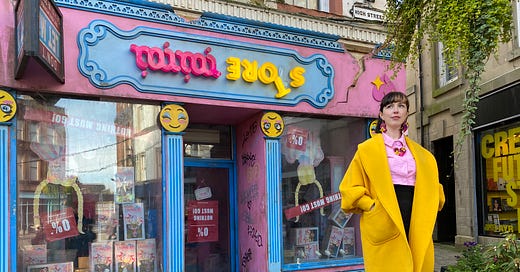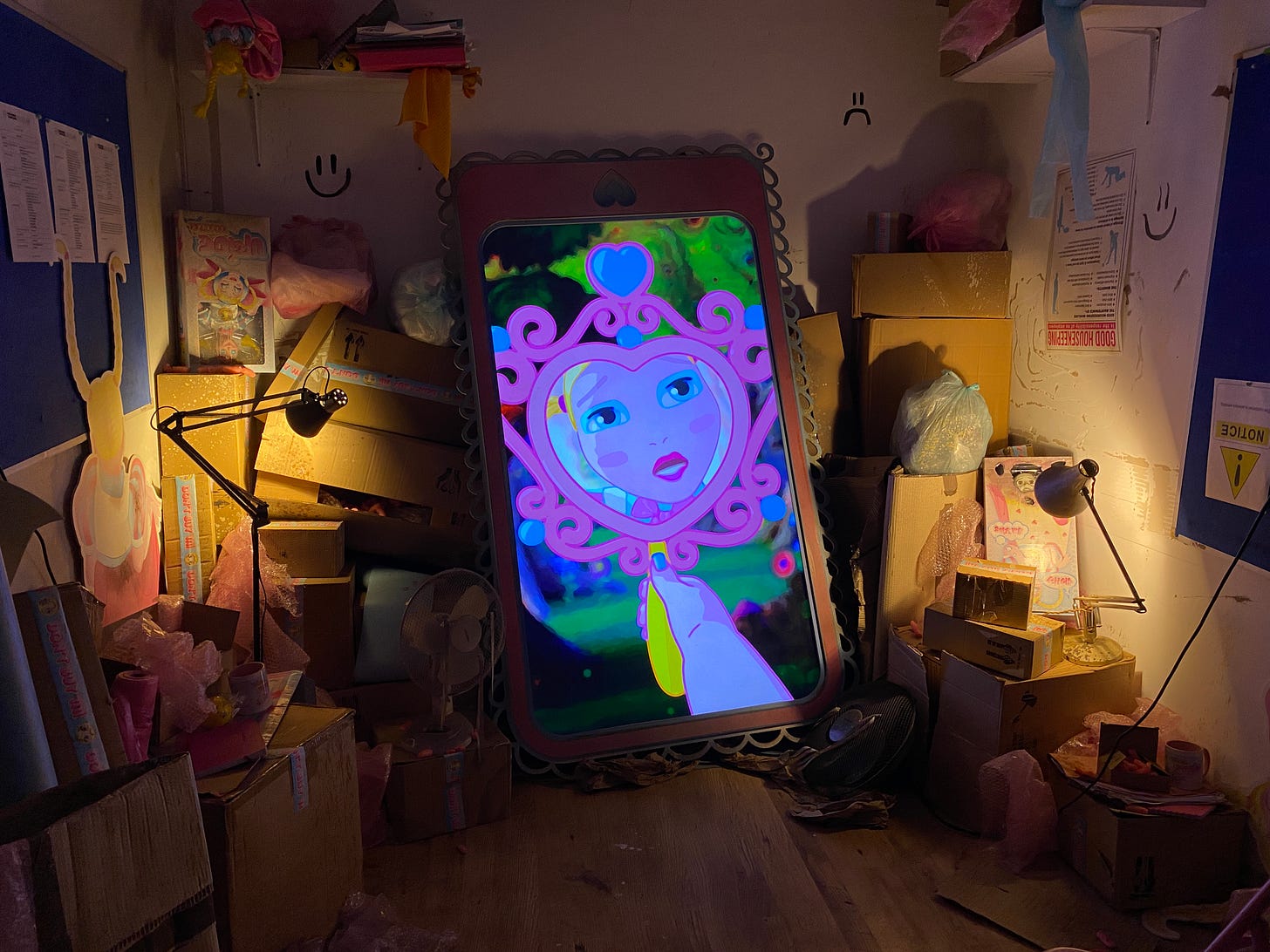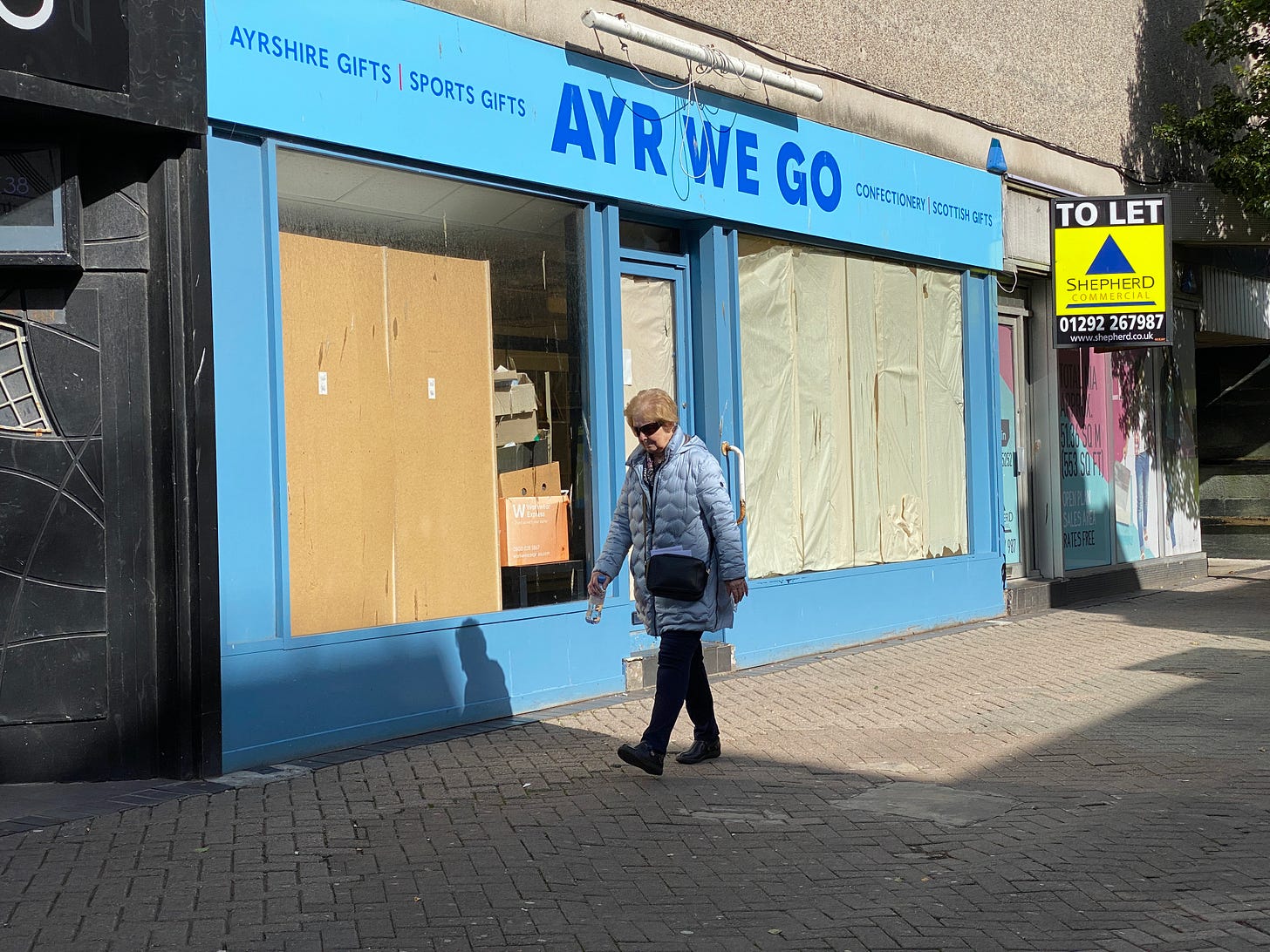Interview with Rachel Maclean
Talking Barbie, beauty, feminism & fairy tales with the artist at the launch of Don't Buy Mi in Ayr
The arts are in crisis with funding cuts by a government that wants ballet dancers to become programmers. The high street is in crisis as the cost of living rises and people shop online. Could combining these two negatives make a positive? Could our high streets be revived by art?1 Could art become relevant to normal people by being on the high street?
This week saw the opening of Rachel Maclean's installation Don't Buy Mi, which turns a former barbershop on Ayr's High Street into a sinister toy store. The signage hangs forlorn and dusty dolls line the shelves, but a till and shop assistants suggest that we are in the present, not visiting the ruins of the future.

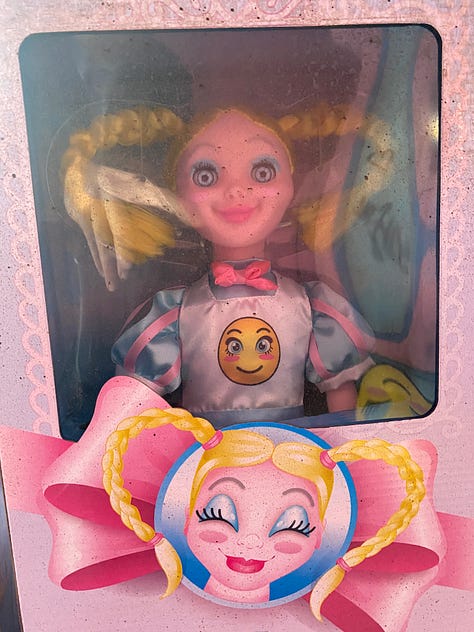

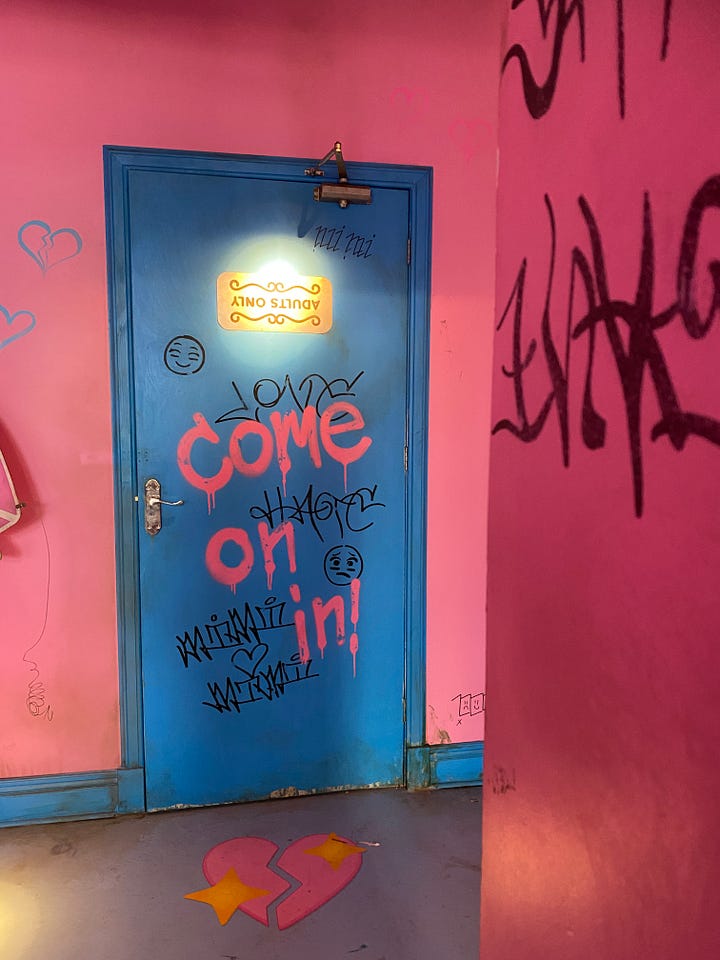
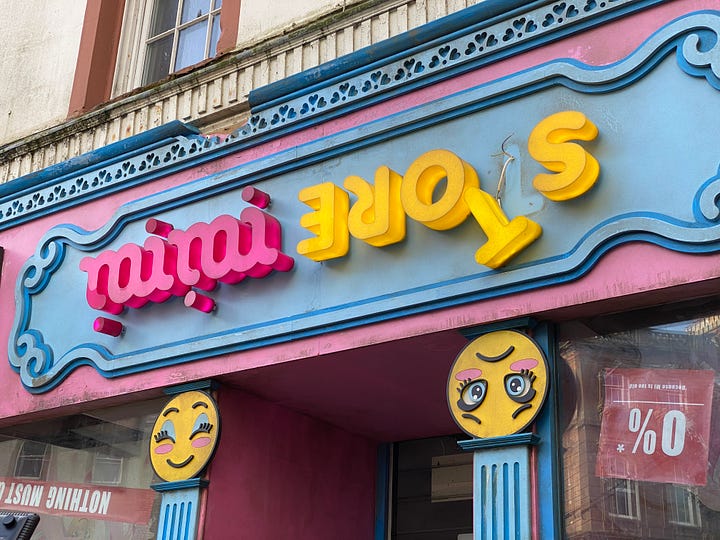
If you’ve ever worked in retail you'll know that beyond the shopfloor is the bleakness of the staff area. Here, a Disney-style cartoon plays on a ten-minute loop. Upside mimi ᴉɯᴉɯ uʍop (2021) is a satirical fairy tale about the distortions of selfie culture, where teenage girls obsess over impossible beauty standards.
After having been interviewed by the BBC, STV, Channel 4 and The Scotsman, I had the opportunity to ask Rachel Maclean about her work and its implications.
Neil Scott: Could you give me an introduction to the project?
Rachel Maclean: Mimi started as a commission for Jupiter Artland. It's a shop in a forest in Hansel and Gretel-style candy colours which you approach via breadcrumb hearts. So it's got this fairytale feel to it, but I'd always intended to put it in a real shop. The first was in Perth and this is the second iteration of Mimi on the High Street.
NS: Whenever I see your work I can’t help but see the world through Rachel Maclean glasses: the full grotesqueness of modern life is visible. However, it seems we are living in a world that is becoming increasingly grotesque. How are you managing to stay one step ahead?
RM: That's true, the real world is more grotesque than the artwork. But if you make grotesque work, the world being grotesque is good inspiration.
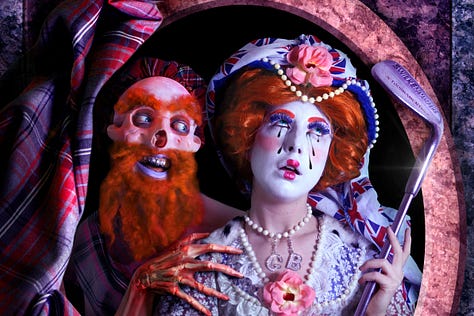
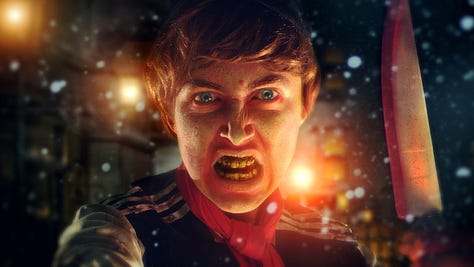
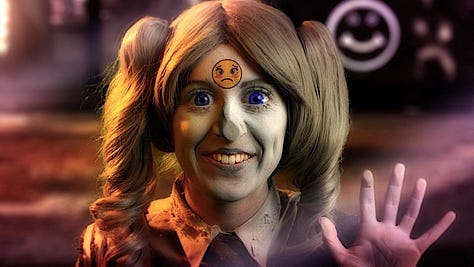
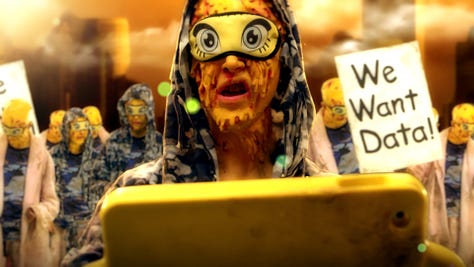
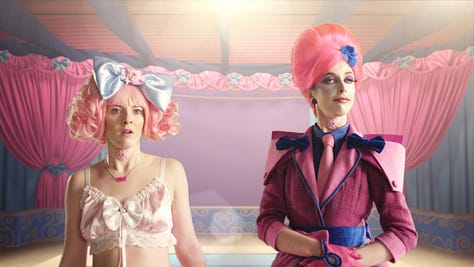
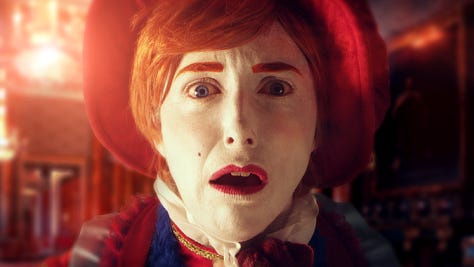
NS: I was walking down the high street in Glasgow and saw a group of teenage girls who looked like they had absorbed the gaze that brings ‘likes’ on TikTok and were proudly pushing it out into the real world.
RM: When I grew up in the 90s and 00s, feminism wasn't cool. It wasn't something that you grew up with an understanding of in popular culture. Now feminism is much more mainstream. Young women are much more clued up on privileges, inequalities and expectations for their lives. At the same time, there's been this backlash. There's Andrew Tate and the extreme manosphere, this misogynistic strain in culture, so I find it hard to weigh all that up.
I intentionally work with a feminine aesthetic and I do that because there's an expectation that if you use candy colours or pink there's something inherently silly or frivolous or unserious in it. And that's an extension of the sense that female experience is silly and is not something that should be taken seriously. So I like working with an aesthetic that can be associated with a restricted idea of gender while being subversive.
NS: In a way, capitalism gives us what we want. Not necessarily what we need but what we want … or maybe what we find compulsive. To what extent do you think there is an authentic self with authentic wants? Is it layers of artifice all the way down or is there a core?
RM: With consumerism, you're intended to desire something that's totally out of reach and inaccessible. You're presented with images of femininity or idealised beauty that you'll never achieve. But you're sold things that lead you to believe if I just buy this thing and then I'll be closer to this unachievable image.
In my work, I'm aware of that and often make things that are intentionally ugly. There's something subversive in that. Beauty, in our culture, is something that you can never access. Whereas ugliness, you can absolutely do that. That's the state that you're in before you put on makeup and before you apply all these things to yourself.
So I create characters that are powerful but are visually grotesque. But they own it and they seem to love it and revel in that. And instead of opening and being a brand new shop, even though it is new, looks old and worn down and dirty and it feels dishevelled. There's something in the inversion that I'm interested in.
NS: I remember hearing about someone who when they were thirteen all their old toys got taken to the charity shop. It was just like: “You're not a little child anymore, we're going to get rid of this.” What were your experiences with toys growing up?
RM: I still love toys at some level. There's something seductive about being in a toy shop. But I don't remember having my toys taken away. I did have a toy that inspired the artwork. It was a doll that had Little Red Riding Hood on one side and then you invert it and it's Granny on the other side. And then it had a little hood that pulls over Granny's head and it becomes the wolf. I remember finding that fascinating.
Since being a kid I’ve loved fairy tales … and even more so as an adult. I'm interested in them as these stories that can morph with culture and take on different meanings. There's a traditional version of fairy tales which is often quite misogynistic, but then they are these malleable things which can be turned into feminist stories. At the same time are very accessible. People know them and what to expect so you can play and subvert their expectations.
NS: There is this tension between being a child and being an adult. You’ve spoken previously about the trend for people wearing onesies and drinking milky coffee, being like big babies. What does it mean to be an adult now?
RM: There's less of an idea of being an adult now. There has been an infantilising of adult culture. Maybe it has something to do with the financial crash and austerity. There are no longer opportunities to become a proper adult or achieve the things that your parents did.
There might also be a psychological reversion to childhood as a space which is protected and sealed off from the horrible things in the adult world. Childhood isn't really that but, in an imaginary way, it is. That’s partly the adult attraction to it: this cosy place you can go into and not have to face the horrors of the real world.
NS: Thankfully you're here to bring some horror to the Ayr High Street! Now the big film this year is Barbie. What does it represent for you?
RM: Barbie the film?
NS: I guess both the film and the doll.
RM: I thought the film was great in that it's a very complicated Barbie. The traditional kind of Barbie being blonde, skinny, and white represents a very problematic idea of female beauty. Even her body proportions: if your feet were that small relative to your body you'd topple over. So there's something inherently problematic about her.
But it's difficult as a woman to just completely shed all ideas of femininity or pink because then what you're left with is masculinity: masculine colours, shapes and culture. And that's problematic too because if you want to look like a powerful woman, you make yourself look and sound more like a man. So I'm interested in this complicated space of whether you can use femininity but do so in a way that's feminist.
NS: And the doll? Are there any toys you would ban for your daughters?
RM: I haven't so far, but maybe I'm not strict enough. Like fairy tales, toys can shift and take on different meanings. These things are not fixed, it's just how culture applies meaning to them.
NS: I was cycling past a beautician’s space in Easterhouse and their logo was just a big syringe …
RM: I've seen quite a few of those. They're called aesthetic clinics or something. The word aesthetic has gone from being an art theory word to being on beauty shops.
NS: It's quite bizarre. What does that mean? A highbrow version of beauty? One thing I noticed in all your work is that it is concerned with power relations. Is there any possibility of transcendence in your work or is it all power relations?
RM: I guess [transcendence] is not something I'm aiming for. I'm trying to make all my work funny or at least absurd. I'm aware art is easily made fun of because often it's so po-faced and serious. That can create a certain degree of absurdity because it's often people doing these quite silly things but taking them incredibly seriously. That doesn't mean that you can't get lost in my work or lost in its world. But there's always a degree of humorous distance maybe from total sincerity.
NS: Both of your parents are teachers, right? It's like one of those social experiments where If we get two art teachers together, we can concoct a super artist. What was that like growing up?
RM: My mum and dad were always making stuff. My dad did all the school stage sets, which I remember being amazing because you could go in and look around them. They were always mega-encouraging and I was really lucky to have art materials.
NS: The last time I saw you I asked whether art was going to be a springboard into filmmaking, like Sam Taylor-Wood and Steve McQueen. How is that going?
RM: I'm writing a feature film that I really hope I can get that off the ground. I'd love to reach a wider audience with it. I've always tried to make work that is accessible, dealing with the kind of stories that people recognise.
Just as we were talking about reaching a wider audience, Rachel was called away to speak to Channel 4.
Don't Buy Mi welcomes visitors Wed-Sun on Ayr High Street until 23 December 2023.
There certainly seems to be an appetite for this. See the comments to my popular tweet about the conversion of an abandoned M&S into artist studios. In the same vein, read Pat Kane’s article on how “laptop-bearing, wide-eyed, ambitious scruffs, gathered at the funky end of Sauchiehall Street, [can] fill other gaps in the city’s smile.”


